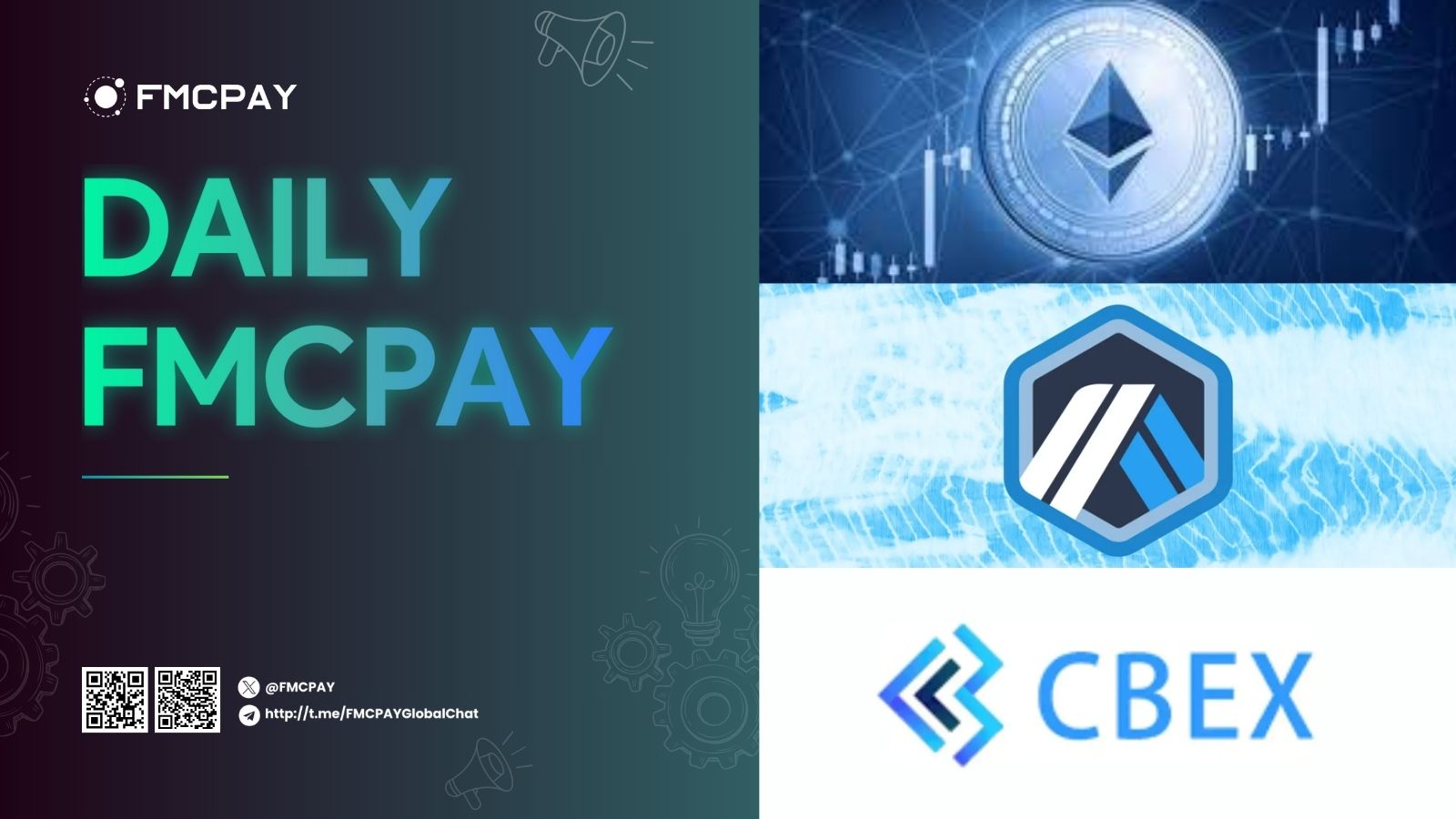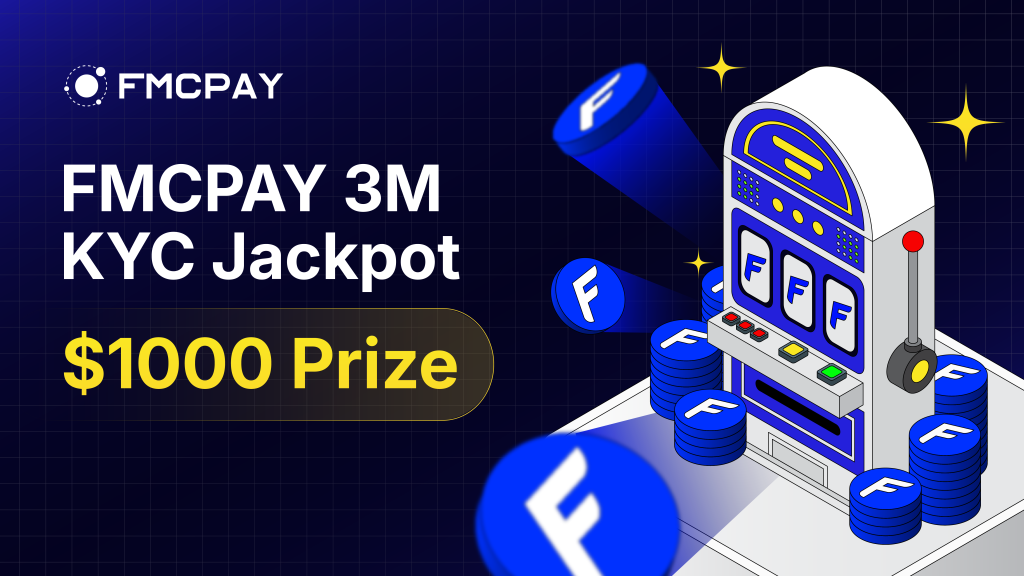The price of Ethereum fell below $1,600. Traders are looking at more serious negative risks as ETH loses market share to competitors.
The price of Ethereum falls below $1,600 on Tuesday as it continues to lose ground to Bitcoin due to multi-chain growth and mounting economic pressure. These are crucial levels that traders need to keep an eye on in the coming days as the price of ETH is in danger of plunging to multi-year lows.
Ethereum (ETH) faces intense sell-offs a week after Trump repeals DeFi law
As its market share across Layer-1 chains continues to decline, Ethereum (ETH) is seeing further challenges. It is currently getting close to the record lows last seen during the altcoin supercycle of 2021.
As competition among Layer-1 networks continues eroding Ethereum’s market share, the cryptocurrency faces unfavorable headwinds this week. Key trade indicators indicate that Ethereum may be in danger of falling to record lows last seen during the 2021 altcoin supercycle, even if the cryptocurrency’s price is now hovering above the $1,590 mark.

Only a week after former President Donald Trump overturned a Biden-approved regulation requiring DeFi platforms to follow strict KYC requirements for authorized brokers, ETH’s most recent sell-off became more intense.
It’s interesting to note that the sudden reversal, which was intended to stop what Trump referred to as “bureaucratic overreach,” has instead alarmed investors and accelerated withdrawals from Ethereum-based systems.
Ethereum’s proportion of total value locked (TVL) and network activity has decreased from over 70% at its height to less than 55% because to increased competition from quicker, less expensive competitors like Solana, Avalanche, and Base.
Ethereum TVL plunges $12B as ecosystem demand weakens
On-chain activity has been slow even after Ethereum’s Dencun upgrade was successfully implemented in March 2025. Lower gas prices have steadied, but this hasn’t resulted in an increase in demand. While Ethereum L2s like Arbitrum and Optimism have absorbed growing volumes, unintentionally diverting activity away from the foundation layer, daily active addresses and transaction counts are plateauing.

Ethereum’s supremacy in the DeFi and NFT verticals has been weakened by the fragmentation of liquidity caused by capital rotation into Solana and new ecosystems that are compatible with EVMs.
Since the beginning of March 2025, investors have taken out more over $12 billion using Ethereum DeFi protocols, according to statistics from DeFillama.
ETH/BTC pair paints a grim picture
The ETH/BTC trading pair, which has already dropped below the 0.02 level—a psychological threshold that strategic investors regularly monitor—further emphasizes Ethereum’s poor performance.

The persistence of Bitcoin’s dominance, which is currently over 54%, indicates that as the favorable tailwind from US inflation statistics fade, money is shifting from altcoins to more conservative majors.
Spot ETH ETF continues to see sharp withdrawals as the SEC has not yet offered a regulatory model based on Ethereum’s staking scheme, and attitude toward ETH is still shaky. Investors are still nervous about how the US-China trade conflict may affect stock prices, even if US inflation has reduced macro pressures.
Ethereum price forecast: Bulls count on $1,380 support
Technical indicators show important support levels to keep an eye on in the next days as positive mood wanes and Ethereum’s market share in relation to Bitcoin approaches all-time lows.
Because of its global developer network and media domination, Ethereum’s long-term price forecast prospects are still bright, but its short- to medium-term price action points to vulnerability. The downside objective of $1,100 would become more likely until ETH can recover the $2,200 mark with significant volume and strengthen on-chain fundamentals.

The price of ETH is now hovering at $1,642, 31% below its March highs, and a bear flag collapse might signal a plunge below $1,100. But according to the RSI at 42.45, ETH is close to oversold territory, suggesting that there may be short-term support around $1,385. The present consolidation pattern indicates that ETH is attempting to stabilize, even if the 50-, 100-, and 200-day SMAs are still clearly in a bearish alignment.
In this case, a breakout over $1,730 would be necessary for a positive Ethereum price prediction. On the other hand, if $1,597 is not held, the $1,100 negative goal might be confirmed.
Arbitrum’s RWA market explodes 1,000X in a year, but native token ARB still slides
Since the beginning of 2024, the total value of real-world assets (RWAs) on the Arbitrum network has increased by more than 1,000 times.
More than $200 million in tokenized RWAs are currently hosted on Arbitrum, up from a little $100,000 to $200,000 in early January of last year. This is one of the decentralized finance (DeFi) industry’s most rapid development paths this year.
RWA total value on Arbitrum increases 1,000X
The Stable Treasury Endowment Program (STEP) of Arbitrum DAO, which is presently in its 2.0 phase, is primarily responsible for this exponential growth. To promote stable, liquid, yield-generating RWAs, 85 million ARB tokens were allotted by the program.
1/ ArbitrumDAO goes all-in on RWAs!
The DAO just approved 35M ARB for RWAs via STEP 2.0. This brings the total RWA investments from the DAO treasury to 85M ARB, one of the largest DAO-led RWA allocations in Web3! https://t.co/2P6MDSK4PK
— Arbitrum Governance (@arbitrumdao_gov) February 18, 2025
The plan seems to be working, since it tries to lessen the DAO’s exposure to erratic native crypto assets and contribute to the development of a more robust treasury.
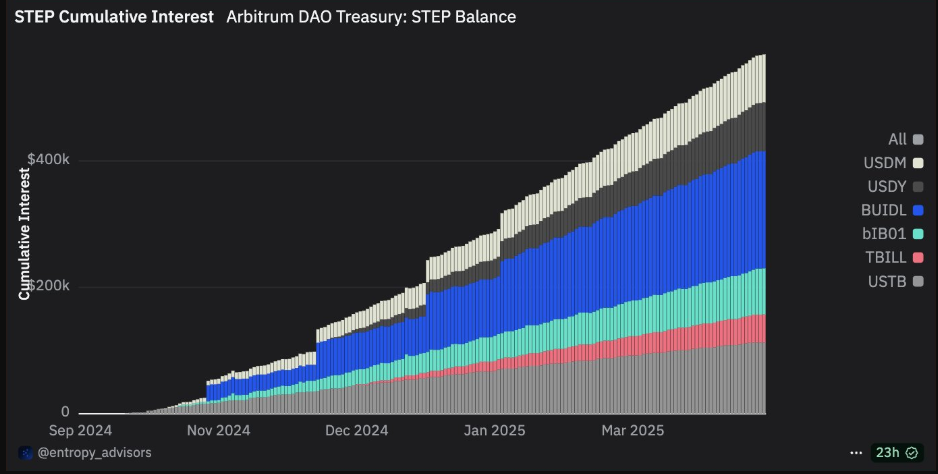
Ninety-seven percent of Arbitrum’s RWA ecosystem is made up of US Treasuries. With 36% of the market, Franklin Templeton’s BENJI is in first place, followed by SPIKO’s European treasuries with 18%.
This expansion beyond US-centric tools is encouraging for institutional involvement with Arbitrum on a worldwide scale.
Similar to Avalanche’s pattern, treasuries dominate the asset class, representing a 97% market share.
The top spot on Arbitrum goes to Franklin Templeton’s BENJI, taking a ~36% slice of the pie.
Fun fact? SPIKO’s EU treasuries by SPIKO ranks 2nd with ~18% share.
Clearly, the… pic.twitter.com/98yFCMNLuJ
— The Learning Pill 💊 (@thelearningpill) April 15, 2025
The ecosystem’s momentum has also been increased by newcomers like Dinari, who provide tokenized versions of conventional assets. Through its dShares platform, they include of equities, ETFs (exchange-traded funds), and REITs.
On Arbitrum, there are over 18 tokenized RWA products that span a range of asset types, from bonds to real estate. This institutional inflow was emphasized by Arbitrum on X (Twitter).
RWA and Stablecoin adoption on Arbitrum has been monumental!
Some of the largest institutions are bringing their tokenized assets to the land of liquidity with $4.7B in Stablecoins and over $214M in RWAs already onchain
Let’s take a closer look 👇 pic.twitter.com/OzSwnbuwoc
— Arbitrum (@arbitrum) April 14, 2025
Tokenizing anything from real estate portfolios to sovereign debt is being done by teams like Securitize, DigiFT, and SPIKO, indicating the early development of a new financial substrate.
However, the network’s native token, ARB, is down 88% from its peak despite the robust ecosystem expansion.
A 92.63 million ARB token unlock is on the horizon, indicating more negative pressure. Concerns around dilution and the absence of direct token accrual from RWA growth continue to be major market overhangs, since just 46% of the whole quantity is already in circulation.
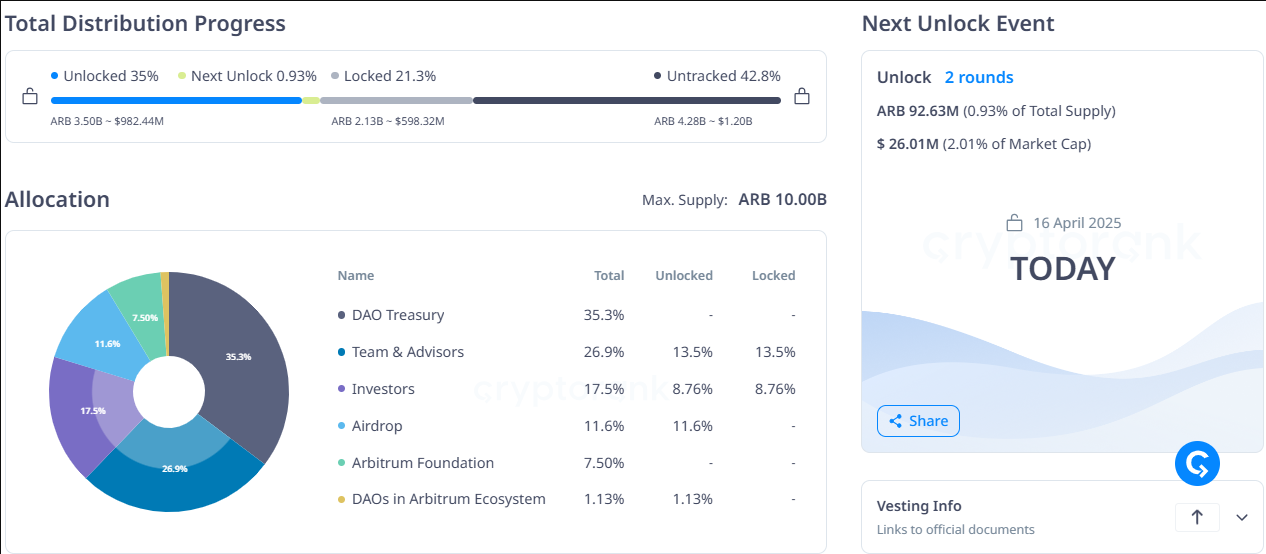
Tokenized RWA cross $11B, Ethereum dominates onchain finance frontier
Even while it doesn’t make the news, the real-world asset sector as a whole has quietly emerged as one of the most important movements in cryptocurrency, aside from Arbitrum.
DeFiLlama claims that the total value secured by on-chain RWAs has topped $11.169 billion, a 2.5X increase in the last 12 months.
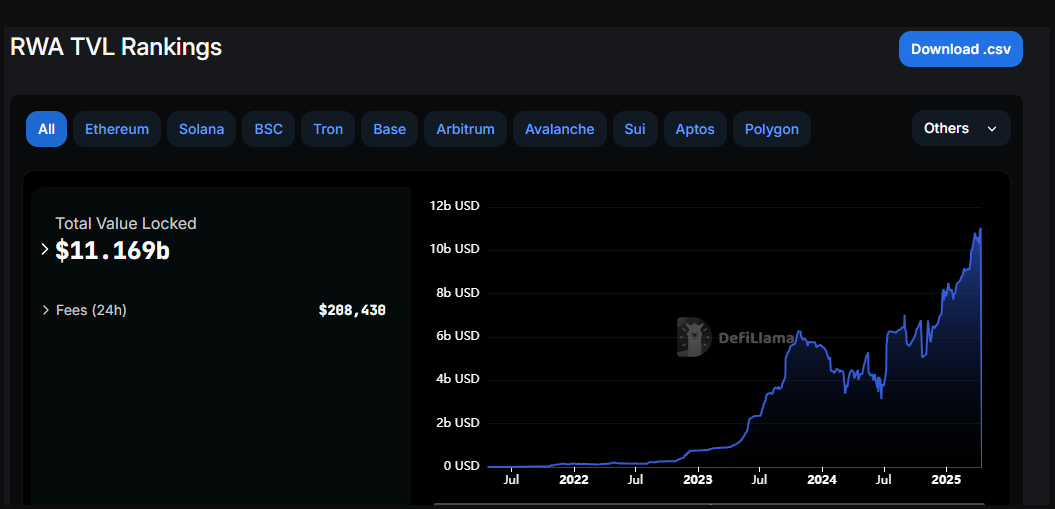
This surge is being driven by tokenized gold and US Treasuries. Tokenized Treasuries alone now total more than $2.38 billion in BlackRock’s BUIDL portfolio. In the meantime, a new research claims that blockchain-based gold holdings have surpassed $1.2 billion due to increased metal prices and market demand.
With almost 80% of all on-chain RWAs hosted on Ethereum, it continues to be at the forefront. With blockchain rails, Ethereum provides the infrastructure and liquidity required to connect capital markets as TradFi giants look for programmable exposure to dollar yields and real assets.
“The top RWA protocols aren’t chasing crypto narratives. They are offering something TradFi understands: yield, dollar exposure, and gold. This is not the future of DeFi. It’s the future of finance,” DeFi analyst Patrick Scott observed.
According to builders, adoption is already deeply ingrained in staking layers and numerous automated market makers (AMMs), as well as on-chain-native apps like Pendle, Morpho, and Frax. The “real yield” idea has been included into the foundation of the new financial system.
“The TradFi narrative is nice, but the adoption so far is on-chain-native,” DeFi builder Artem Tolkachev noted.
RWAs demonstrate that slow, reliable, and scalable is the best option, despite the fact that dazzling DeFi tests frequently imitate casinos.
Enhancing access, liquidity, and incentives is the next big thing, especially on non-Ethereum networks like Arbitrum where the technological foundation is solid but market trust is still erratic.
CBEX collapse: The $800M crypto scam that shook Nigeria and Kenya
One of the biggest financial frauds in Nigerian history is now centered on CBEX, a self-described digital asset trading platform. Thousands of investors have lost all they have.
With its promise of extremely large returns (100 percent in 30 days), CBEX soon drew consumers from Kenya and Nigeria. It lured victims by taking advantage of the area’s economic distress. However, a sophisticated Ponzi scheme was hidden behind the ostentatious facade.
CBEX collapses: A foreseeable end
At the beginning of April 2025, the platform abruptly collapsed. Widely seen as a desperate attempt to extort additional money from victims, CBEX blocked withdrawals, closed its official Telegram channel, and required customers to pay a $100–$200 “verification” charge in order to have a chance to get their money back.
In the past, CBEX has assured customers of a thirty percent return on their investment in as little as one month. However, many investors are now unable to withdraw their money and worry that it may be lost forever.
A CBEX office in Ibadan, southern Nigeria, was invaded by irate clients, the BBC reported. Others posted about their accounts being frozen on social media. Many people shared heartfelt videos.
“I was ready to withdraw all my investment just last week but my friend told me to be patient and wait — and now it has crashed,” investor Ola told the BBC.
According to Nation Online, consumers’ money disappeared practically immediately after the deposit. This implies that the digital assets that investors thought they were trading were never ever possessed or accessible. Over 1.3 trillion Naira (almost 800 million USD) is the estimated loss, according to Nation Online.
Comparisons have been made between the CBEX disaster and MMM, a well-known Ponzi scam that depleted millions of dollars’ worth of funds in Nigeria in 2016. Many people joined CBEX in the hopes of cashing out early, despite their suspicions that it was a hoax. The majority were left with just remorse.
How did CBEX operate?
A thorough report on X that exposed CBEX’s activities was released by independent investigator Specter.
Specter claims that CBEX routed victims’ money through a network of wallets using the TRON blockchain. The funds were then sent to well-known exchanges like OKX, Bitget, and HTX after being converted into USDT or USDD.
Onchain data analysis 🧵
CBEX generates a new wallet address for every new user. When victims deposit, their funds are moved to another wallet.
TRON is the primary chain used. Since TRON requires “Energy” to reduce transaction fees, CBEX uses some wallets to delegate energy to…— Specter (@SpecterAnalyst) April 15, 2025
One wallet that got $3.2 million was traced by Specter; it is currently worth $353,000. Another had $1.9 million. Through a number of transactions, almost $5.7 million has been located.
Additionally, CBEX seems to be connected to the Southeast Asian money laundering network Huione Pay. The platform made use of templates for fraudulent websites created by Kehon8, a 145,000-follower Telegram developer.
Victor Aiguosatile Osamwende was one of several Nigerian Telegram administrators named in Specter’s investigation for promoting CBEX and reportedly threatening victims following the collapse. Additionally, it exposed the link between CBEX and LWEX, another Ponzi scam that uses a very identical interface to target Slovakia and Hungary.
Concerns regarding information security are raised by the possibility that user KYC data from CBEX may have leaked to the darknet, further compounding the impact.

